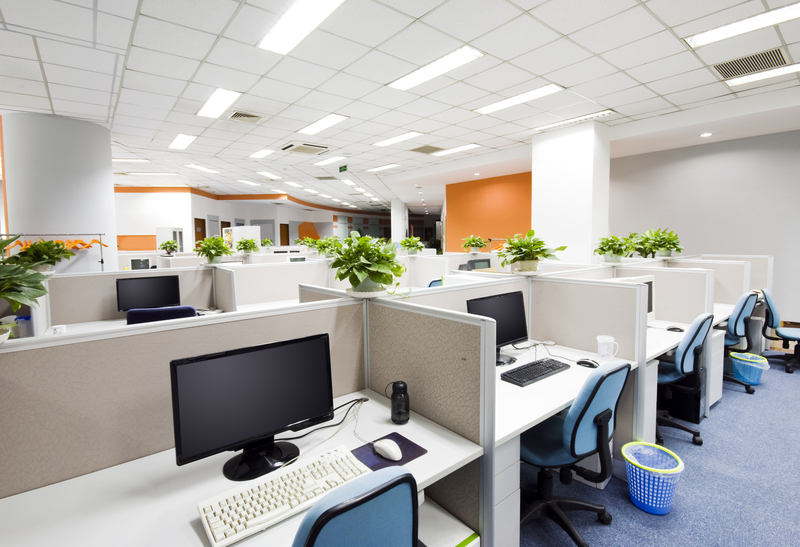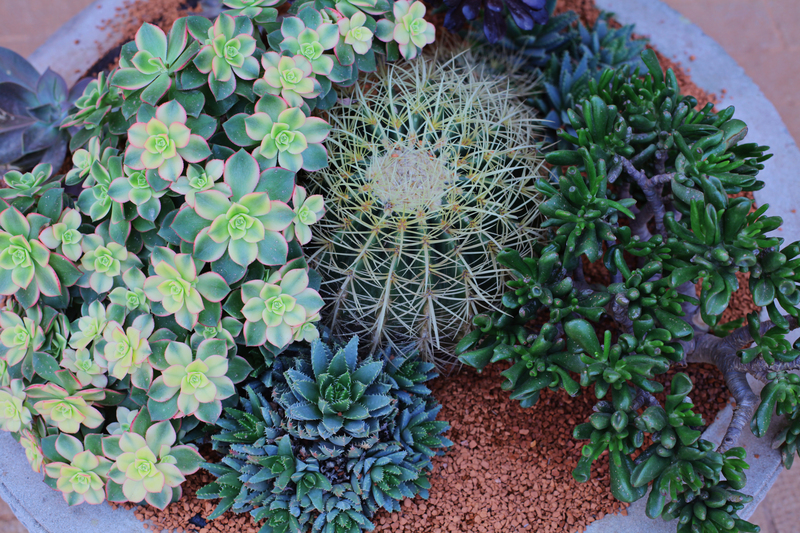An introduction to the versatile practice of container gardening
Posted on 07/09/2025
An Introduction to the Versatile Practice of Container Gardening
Container gardening has swiftly gained popularity among urbanites, suburban homeowners, and even rural dwellers looking to maximize their planting potential. Not only is it a practical solution for those with limited outdoor space, but it opens up a world of creative possibilities for growing flowers, herbs, vegetables, and even small trees. Whether you're new to the gardening world or weighing up ways to spruce up your balcony, this introduction to container gardening will walk you through the essentials, advantages, and strategies for successful potted plant care.
What is Container Gardening?
Container gardening is the practice of growing plants exclusively in containers instead of planting them in the ground. These containers can range from traditional clay terracotta pots to recycled buckets, wheelbarrows, window boxes, and even chic hanging baskets. The goal is to create a portable, customizable growing environment that meets both the plant's needs and the gardener's aesthetic preferences.
An Age-old Gardening Technique, Reimagined
This method isn't new. For centuries, people have cultivated plants in pots for both ornamental and practical uses. What has changed is the improved quality and diversity of containers and soil mixes, plus access to a worldwide array of plants suited for confined growing spaces. Today, versatile container gardening offers more options than ever before.

Benefits of Container Gardening
Choosing to garden in containers provides a plethora of benefits for gardeners of all experience levels:
- Space-efficient: Perfect for balconies, patios, courtyards, and indoor spaces where traditional garden beds aren't possible.
- Portable: Move your container plants to catch more sunlight, avoid harsh weather, or simply refresh your living space.
- Pest & Disease Control: Isolating plants in pots often makes it easier to monitor and control for diseases and pests.
- Customization: Tailor soil types, nutrients, and watering frequencies for specific plants to thrive.
- Accessibility: Easier on the back, knees, and hands--ideal for seniors or those with mobility issues.
- Creative Expression: From quirky upcycled planters to coordinated color schemes, container gardening offers countless opportunities to showcase your style.
Urban Gardening Made Possible
For city dwellers, container gardening is often the only way to enjoy growing plants or edible crops. You can transform rooftop terraces, window ledges, and even stairwells into miniature gardens that breathe life into concrete jungles.
Types of Container Gardens
With some imagination, nearly anything that holds soil and drains well can become a plant pot. Here are several types of container gardens:
- Window Boxes: Ideal for annual flowers or trailing herbs outside your kitchen window.
- Hanging Baskets: Perfect for vertical displays of ferns, petunias, or strawberries.
- Potted Vegetable Gardens: Grow tomatoes, peppers, lettuce, and more in deep, roomy pots.
- Herb Containers: Small pots for kitchen essentials like basil, parsley, or thyme.
- Mixed Plant Containers: Combine flowers, herbs, and small veggies for a colorful, functional arrangement.
- Indoor Container Plants: Houseplants or even dwarf fruit trees thrive inside the right-sized containers.
Recycled and DIY Planters
Creative container gardening makes use of recycled materials like old boots, teapots, or crates. Just remember to add drainage holes for healthy roots!
Choosing the Right Containers
Selecting an appropriate planter is as crucial as selecting the plant itself. Here are some key factors to consider:
- Material: Clay and ceramic pots are classic, while plastic is lightweight and economical. Wood offers a rustic look, but must be treated to avoid rot.
- Drainage: Drainage holes are a must. Plants sitting in waterlogged soil quickly succumb to root rot.
- Size: Match container size to the plant's mature dimensions. Overcrowding stunts growth and invites disease.
- Mobility: Large containers get heavy--use wheeled stands if you plan to move them frequently.
- Insulation: Thick-walled pots protect roots from extreme heat or cold better than thin plastic.
Best Plants for Container Gardening
The variety of plants suitable for container gardening is staggering. Almost anything you can grow in the ground, you can grow in a suitably sized container. Here are some popular options:
Ornamental Plants
- Annuals: Petunias, marigolds, pansies, and impatiens offer abundant flowers and constant color through the season.
- Perennials: Hostas, daylilies, and lavender provide longevity to container displays.
- Bulbs: Tulips and daffodils can be pre-chilled and planted for spring bouquets in pots.
Edible Crops
- Herbs: Basil, mint, chives, and cilantro perform well in small containers indoors or out.
- Salad Greens: Looseleaf lettuce, spinach, and arugula are quick, productive, and look lush in mixed pots.
- Tomatoes, Peppers & Eggplants: Look for dwarf or patio varieties bred to be compact.
- Root Vegetables: Carrots, beets, and radishes need deep containers and regular moisture.
- Dwarf Fruit Trees: Miniature citrus, figs, and apples can be spectacular focal points in large tubs.
Essential Components of Successful Container Gardening
Understanding what plants require in their confined space is essential for thriving container gardens:
The Right Potting Mix
Fill your containers with a high-quality, sterile potting mix rather than garden soil. Potting soil is formulated for drainage, nutrient retention, and root aeration--crucial for healthy plants. For specialty crops, choose mixes tailored for cacti, succulents, orchids, or acid-loving plants. Never use "topsoil" in containers; it compacts and drains poorly.
Proper Drainage
As already emphasized, drainage holes in the container's bottom allow excess water to escape, preventing soggy roots. Adding a layer of gravel at the base is optional, but make sure it doesn't clog the drainage holes.
Sunlight and Placement
Most vegetables and flowering plants prefer at least 6 hours of direct sunlight daily. Check the sunlight patterns of your balcony, patio, or windowsill and select plants accordingly. Shade-loving plants like ferns and impatiens are excellent for north-facing spaces.
Consistent Watering
Containers dry out far quicker than garden beds, especially in summer. Monitor the soil regularly, watering when the top inch feels dry. Using self-watering pots and mulching the soil surface keeps moisture levels more stable.
Fertilization
Nutrients leach out with frequent watering, so container plants need regular feeding. Use a slow-release granular fertilizer at planting time and supplement with a liquid fertilizer every few weeks.
Design Tips for Attractive Container Gardens
Beyond practicality, container gardening is an opportunity for artistic expression. Consider these design suggestions:
- Thriller-Spiller-Filler Technique: Combine a tall, dramatic plant (the "thriller"), with trailing vines or flowers ("spillers"), and bushy, mid-height plants ("fillers") for visually dynamic containers.
- Color Schemes: Pick complementary or monochrome plant and container combinations for a unified look.
- Grouping: Cluster pots of varying heights and sizes for richness and depth.
- Seasonal Swaps: Refresh containers with seasonal annuals, bulbs, or festive decor year-round.
Small Space Tips
Make the most of modest areas by going vertical with trellises, wall-mounted planters, or tiered stands. Choose compact or trailing varieties to avoid overcrowding.
Common Questions About Container Gardening
How Often Should I Water Container Plants?
Frequency varies based on plant type, container size, weather, and exposure. During hot months, most containers require daily or every-other-day watering. The finger test--insert a finger into the soil up to the first knuckle--can help you judge moisture needs.
Can I Grow Vegetables Year-Round in Containers?
With the right plant selection, you can grow vegetables in containers nearly all year, especially if you bring pots indoors during the coldest months or use small cold frames or cloches outdoors.
How Do I Prevent Pests and Diseases in Container Gardens?
- Use sterile potting soil
- Regularly inspect leaves for signs of trouble
- Isolate new plants before introducing to established collections
- Avoid overwatering
What Are the Most Low-Maintenance Plants for Beginners?
Succulents, snake plants, jade, geraniums, marigolds, and most herbs (such as rosemary, oregano, and mint) are reliable for those new to container gardening.

Getting Started: Step-by-Step
Ready to try your hand at the versatile practice of container gardening? Here's a simple plan to launch your first project:
- Pick Your Location: Identify where you want your new container garden--balcony, patio, window box, or tabletop.
- Select Containers: Choose sizes and styles that suit your intended plants and aesthetic.
- Choose Plants: Match plants to your space's sunlight and climate. Consider growth habits and companion planting.
- Prepare Potting Mix: Moisten your chosen mix and add slow-release fertilizer for a strong start.
- Plant: Arrange plants with enough space for growth. Leave about an inch between the soil surface and pot rim for watering.
- Water In: Water thoroughly after planting and monitor closely in the first few weeks.
- Care and Enjoy: Feed regularly, deadhead faded flowers, and rotate pots for even sun exposure as needed.
Conclusion: Grow Anywhere with Container Gardening
As you can see, the versatile practice of container gardening puts garden dreams within anyone's reach. Whether your goal is a kitchen full of fresh herbs, a patio ablaze with color, or a lush living room, the power to cultivate beauty, flavor, and serenity is squarely in your hands--no yard needed. Start with a single pot or a collection: either way, you'll discover the satisfaction and creativity of nurturing your own mini garden oasis.
Ready to get growing? Gather your supplies, choose your favorite plants, and experience the joy and flexibility that only container gardening can deliver. Happy planting!

